Guanshan City and Wudu Tour
The Mid Autumn Festival has just passed, and the trip to Chongqing has begun. On the first day, Shanghai arrived at Chongqing's "Jiangbei Airport", and there was a bus from the airport passenger station to Hechuan, which took about 1.5 hours by car. Transfer to a bus at the bus stop in the city center and stay at the nearby "Yilai Hotel". Then take the bus for 3 stops to Fortune Square, get off and walk 400 meters to dine at the "Chen Tihua" restaurant. The business of the store is really booming. The lobby has already been fully booked. We arrived after 5pm and could only sit at the small table outside the store without hesitation. Soon after, a queue was formed behind us waiting to sit. The signature hoof flower is very sticky and has a good taste. The stir fry is delicious in color, aroma, and taste. The free fermented rice dumpling garden is truly delicious (you need to pick it up at the cooking counter). After finishing the meal, you can walk to Fortune Square to see the music fountain.

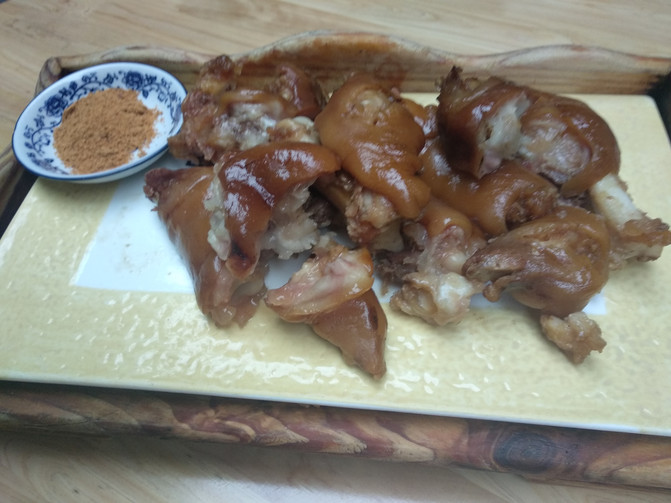

The next day, I took a direct bus to "Laitan Ancient Town" at the passenger transportation center, and there were three buses in the morning. Strictly speaking, Laitan Ancient Town is an ancient village built in the Song Dynasty and is one of the top ten ancient towns in China.

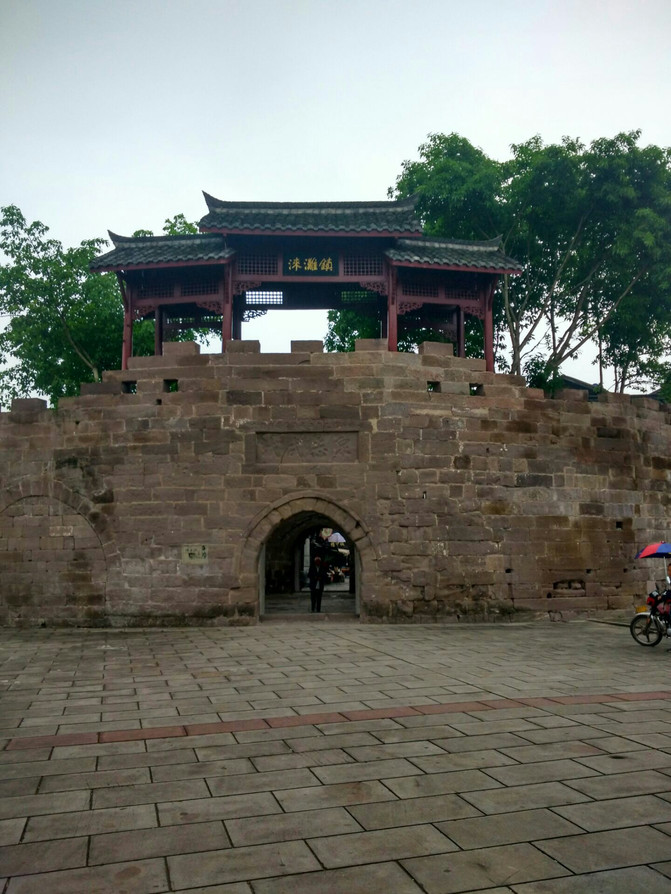


The ancient town is surrounded by cliffs and steep cliffs on three sides, with a true sense of 'one man guarding the pass, ten thousand men unable to open it'. The ancient town is divided into two parts, the first and the second, separated by a distance, resembling siblings. The main attractions include Wengcheng and Wenchang Palace,

The ancient theater building,


Shuanglong Lake, etc. The main temple, known as the "Two Buddhist Temples," was built during the Tang and Song dynasties and is divided into two halls. Originally, one ticket was used to visit both halls, but now they are charged separately.



The Upper Hall is located on the top of Jiufeng Mountain and can be visited along the central axis.

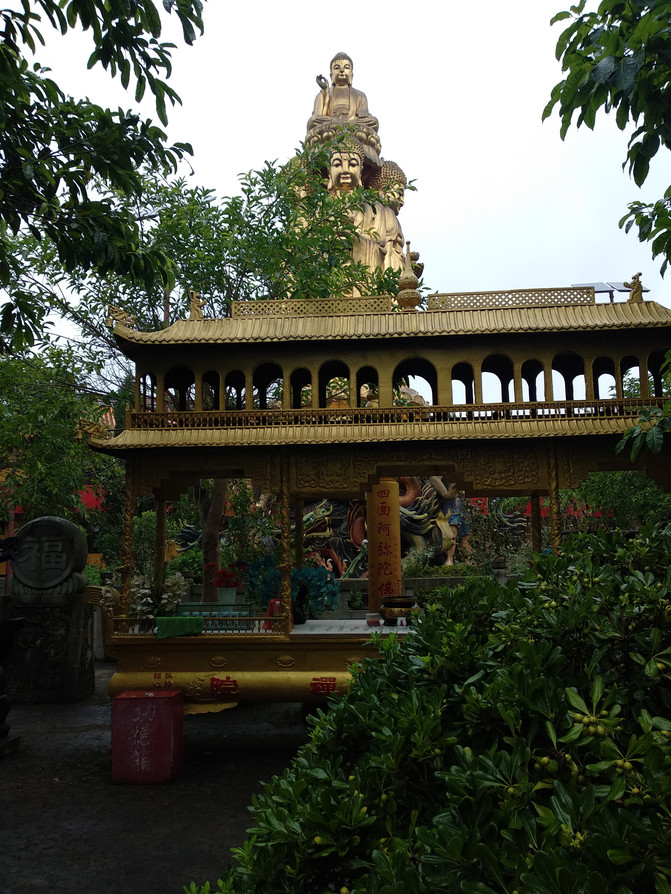
The more famous one is that the four stone columns in the "the Shakya ManiHall", which are about 13 meters high, are made of the whole boulder, and can be called a masterpiece of buildings in all ages.


The memorial archway of the mountain gate is carved with hollowed out stone feet. It is extremely beautiful and is a rare historical and cultural masterpiece.


The Lower Hall Tama Rock Carvings Group is known as a "pearl buried underground", among which the Buddha statue of Shakyamuni Buddha is 12.5 meters high and the second Buddha in Sichuan. The statue of the Sixth Patriarch with Zen characters is the only group of "family photo" sculptures in the national stone carvings. But the lower hall is undergoing major repairs and we cannot see these true faces.


The "Water Eight Bowls" and "Nine Dou Bowls" in the ancient town are old restaurants and the first choice for dining.



Return to the passenger transportation center and take a taxi to "Fishing City". Although the journey is not far, few cars are willing to go. Previously, taxis could go to the back door of the scenic area, but now they have set up a post halfway up the mountain, and after getting off, you have to approach 1 kilometer. But it's also better than entering the scenic area through the front door, which is a whole mountain climb. Entering through the back door allows you to go downhill all the way, saving a lot of effort.


Visit attractions such as Zhongyi Temple, ancient military camp, Thousand Buddha Grottoes, Diaoyutai, Huguomen, and finally exit the scenic area to Feilai Temple.






In 1259, the Southern Song Dynasty fought against the Mongolian army in Diaoyu City, creating a rare example in the history of war where the weak defeated the strong. It was a battle that changed the history of China and the world. Mongol Khan Mongo was killed here and is therefore known as the "place where God's whip is broken". Compared to Fishing City, it has become unparalleled and unparalleled in the world, earning the title of "Eastern Mecca City".


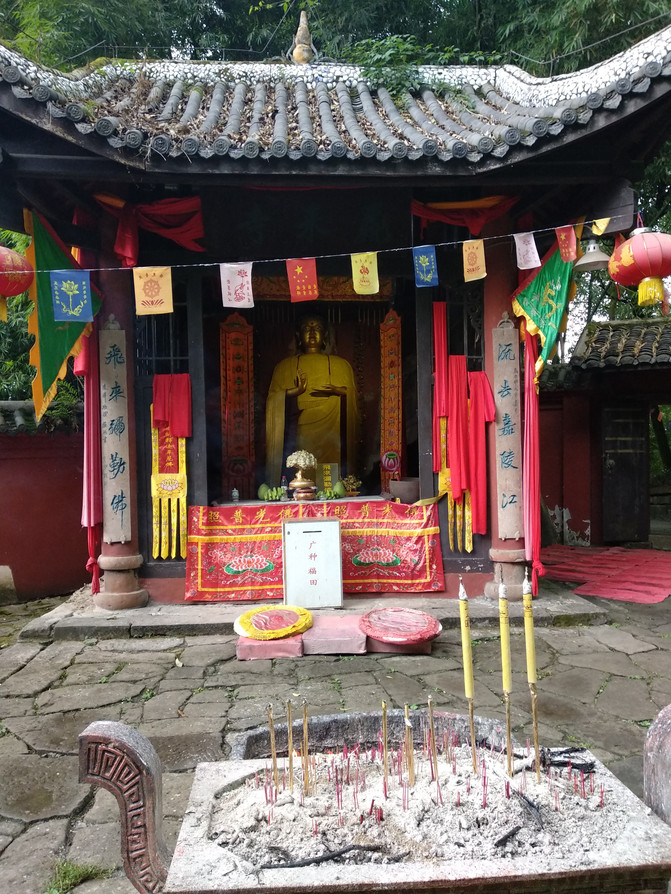

On the third day, Hechuan took a bus to Dazu. Check into Vienna (Hongsheng Square), a newly opened hotel that is clean and comfortable. There is a bus route 205 from the hotel to the main road, which costs 3 yuan per person and takes over 30 minutes by car to reach Baoding Mountain. To get off at the terminal station, do not get off at the entrance of the scenic area. Walk a few tens of meters from the terminal station to reach the cliff statue of Baodingshan. However, entering from the entrance of the scenic area requires walking a lot or taking an electric scooter for 10 yuan per person. If you still want to go to Beishan, buy a joint ticket for two scenic spots, which is more favorable than buying separately.


Dazu Rock Carvings is one of the eight largest grottoes in the world, the general name of the grotto art of cliff statues, and a world cultural heritage. Baoding Mountain is a stone carving, mainly featuring: the Nirvana Sutra of Shakyamuni Buddha, the Thousand Armed Avalokitesvara, the Three Saints of Avatamsaka, the Six Paths of Reincarnation, the Qingbao Pavilion, and the Cattle Herding Map.
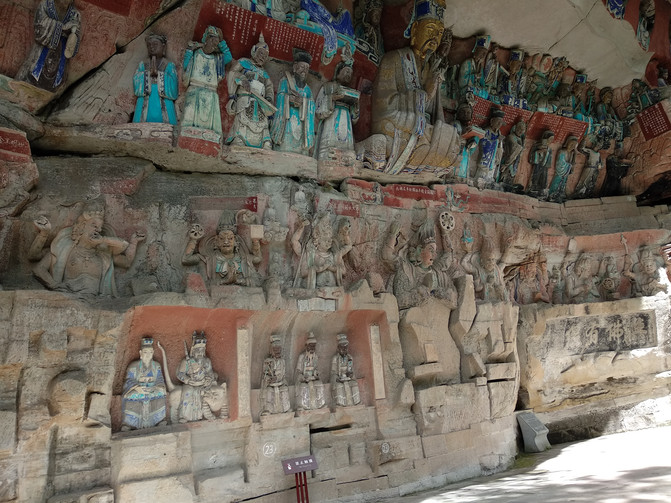









There is only a taxi to Beishan, which is 1.5 kilometers away from the city. Beishan is a grotto, mainly featuring the 125 "Shuzhu Hand Guanyin" in Fowan, the 136 "Light Wheel Scripture Collection Cave" of Puxian (known as the Oriental Venus), as well as the White Pagoda on the opposite side of Beishan and the two giant Buddhas under the White Pagoda.





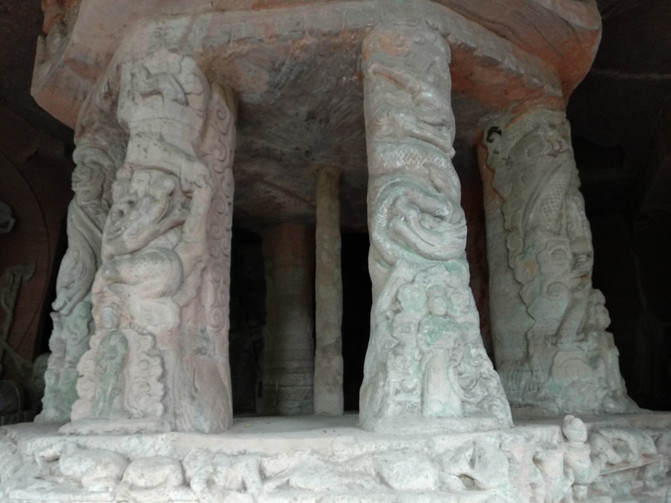



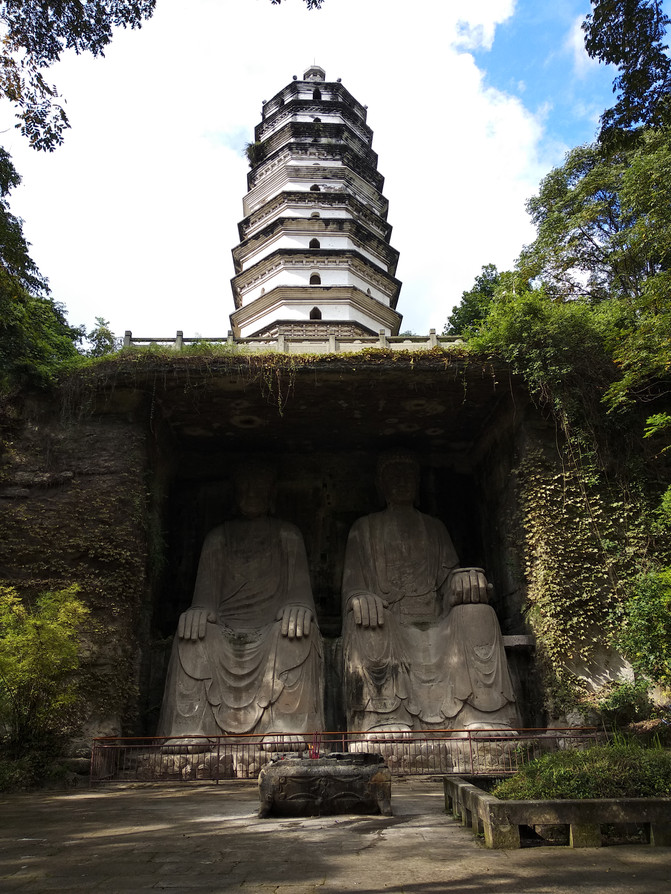
It's almost evening, take a taxi to the "Youting Chen Carp" at the exit of the highway. The Youting Carp is a local specialty with a decent taste.



On the the fourth day, go to Dazu Bus Station (not the passenger transport center) and take the 7:50 bus to Jiangjin. This bus is going to pick up passengers from Dazu Shixi, Shuangqiao, and Youting to Jiangjin. It took nearly two hours to get on the highway, and it was almost 11 o'clock at Jiangjin Passenger Transport Center. Finally, it caught the 11 o'clock bus to Simianshan. A two-hour drive to Simian Mountain, stay at the best Shiji Mingzhu Hotel, and enjoy the best prices. There are few tourists in Simian Mountain, and it is very winding. The food street on the right side of the road has all the shops closed. After a round, I saw that the "Linhong Small Noodle Restaurant" was open. After lunch, I climbed hundreds of steps and arrived at the scenic area with great difficulty.



I bought the ticket, but because there were no tourists, the scenic car had to wait for 45 minutes. After waiting for 35 minutes, a handsome guy arrived and finally the scenic car started. Due to the rain, I visited "Pearl Lake" and "Great Honghai", and the scenery was really mediocre.



In the evening, eating pan fish at the "Stone Pot Legend Selenium rich Bamboo Shoots Stone Pot Fish" next to the hotel had a decent taste. It was not easy to cook such a flavor in mountainous areas, but the price was a bit expensive.


On the fifth day, the breakfast at Shiji Mingzhu Hotel was really poor and hard to compliment. I quickly swallowed a few bites and went to catch the first scenic spot bus. First, I went to see the "Wangxiangtai Waterfall", which is the only scenic spot on Simian Mountain. The Treasure of Town Garden Waterfall is twice as high as Huangguoshu Waterfall, known as the "highest waterfall in China" and a symbol of Simian Mountain.
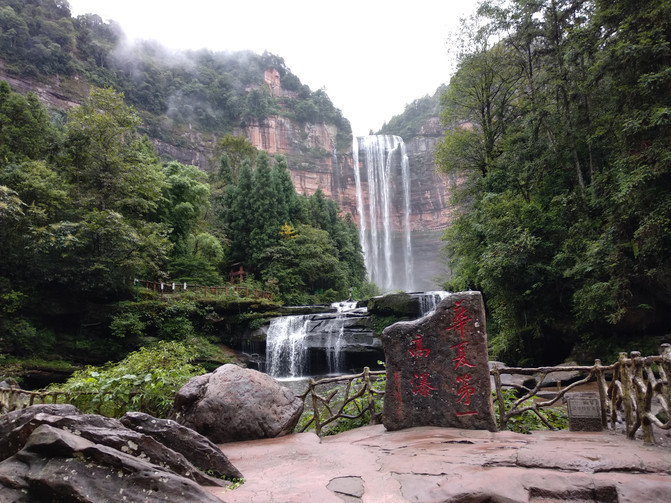



On the opposite hill, there is a natural cave. Standing at the innermost part of the cave and looking out, it feels like the "first sight in the world".


Later, I arrived at the "Land Rock Scenic Area". As I didn't see it in the afternoon fog, I finally saw the Danxia landform of the land rock today. Walking along the boardwalk on the carved rock, I couldn't see any good scenery, so it was better to go to the observation deck.





Request the driver to exit the scenic area through Shuikou Temple so that they can directly take us to the hotel. Catch the 11 o'clock bus. I wrapped my stomach in Jiangjin and originally planned to go to Jinfo Mountain, but it was raining in Jinfo Mountain and the scenery was too bad on a rainy day, so I decided not to go. There was a bus that went to Chongqing and arrived at Chenjiaping Bus Station. Get off and transfer to Metro Line 1 and Line 6 to reach the Four kilometer Hub Station. Just after 3:30, the bus to Wulong has just departed and we can only wait for the next one. The train departs at 4:20 and arrives at Wulong Bus Station in about 2 hours. Check into the Kaidi Hotel next to the station, which has an elevator right next to the bus stop. Due to unfamiliarity, I climbed nearly three levels of stairs with my luggage. The hotel is pretty good, knowing the entrance of the elevator makes it very convenient to enter and exit. In the evening, I had potato rice and chicken soup at the "Firewood Potato Rice" restaurant. The taste was pretty good, especially the bottom of the potato rice pot, which was crispy and burnt yellow. It was extremely delicious and the price was reasonable, with a high cost performance ratio.


Day 6: Take a bus from the bus station to the Xiannv Town Tourist Center, 5 yuan/person. From the second floor of the tourist center, it takes about 15 minutes by car to get to Tiansheng Sanqiao. Due to the off-season, there were not many queues before taking the elevator down.


Then pass through the 'Tianlongqiao Cave',

Arriving at the courtyard style ancient official post station "Tianfu Official Post Station", this place is famous for taking photos of "the whole city is covered in golden armor" and attracts many tourists.




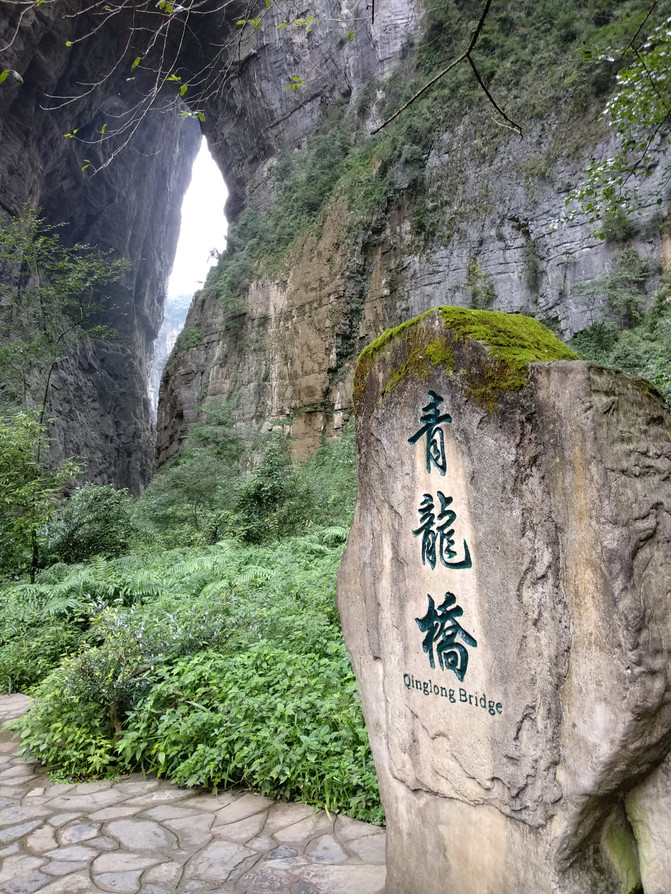
Walk across Qinglong Bridge and exit the scenic area at Heilong Bridge. There are electric scooters available for export, priced at 15 yuan per person. There is a transfer bus at the exit that goes directly to the "ground seam" (there is no need to transfer at the tourist center). You also need to take the elevator down to the "Longshui Gorge Rift", then descend 550 steps to the bottom of the valley, walk along the 2-kilometer boardwalk along the canyon, and enjoy a variety of scenery along the way. Take a scenic car from the exit to the tourist center, and then take a car back to Wulong Bus Station. The scenery of Tiankeng and Dijian feels better than that of Simian Mountain.




Day 7: Take a train to Qianjiang in the morning. After getting off the bus, take the bus to the South Bus Station and then take a taxi to the hotel. Stay at the Junton Road Hotel, which is clean, spacious, and reasonably priced. There are multiple restaurants downstairs for dining.

In the afternoon, I chartered a car to Balahu (Canyon Park), the only urban canyon, hence it is known as the "Luxembourg of the East". Our car drove up the side road, saving on foot strength and tickets.

The most famous attraction is the statue of Guanyin on the rock wall, which is vivid and lifelike. The Buddha statue in the rain is even more mysterious and charming.




In the evening, go to the "National Day Chicken Shop" to taste chicken offal, which is the top restaurant in Qianjiang cuisine and a specialty of Qianjiang. The popularity is very high, with no empty seats. If you come late, please wait for your seat. The chicken offal has a decent taste.
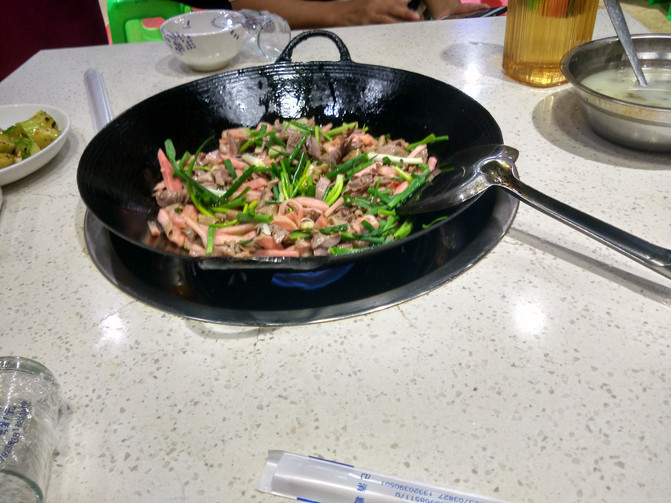

Day 8: Take a bus from the South Bus Station to Zhuoshui Ancient Town. Get off the car and buy 'Puhua Dark River',

There is short parking at the scenic area, and the entrance and exit of the scenic area are separated and managed in an orderly manner. The scenic area mainly offers boat views of the underground river, underground river, natural bridge, and sinkhole, forming a breathtaking scenery.
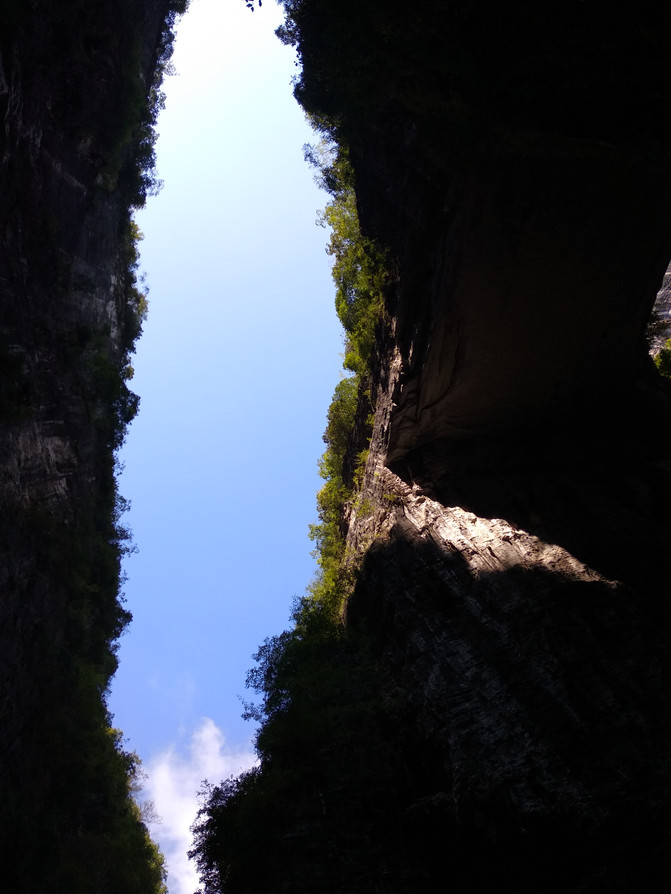



Take the electric scooter to the "Number One Wind and Rain Covered Bridge in the World" - Canglang Bridge, walk along the bridge and admire its scale, grandeur, and exquisite craftsmanship. At the same time, it is also regrettable that the nearby elevated bridge has damaged the overall image of the corridor bridge. The bridge is divided into three parts: the bridge, the tower, and the pavilion. The bridge has three levels of tower pavilions and about a hundred carved wooden windows that can be freely opened and closed on both sides, which is truly charming.






Walking out of the corridor bridge is the ancient town of Zhuoshui. The old street is paved with bluestone slabs, and the shops, residential buildings, guilds, and schools along the road are all made of wooden structures. Some are stilted houses, some are quadrangle courtyards, and some are sweeping corners, arranged in a staggered manner with a unique charm.

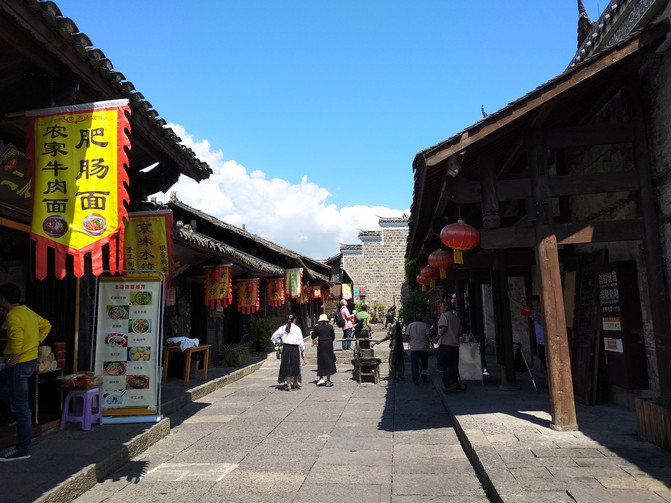





In the middle section stands a moral monument called "Heavenly Righteousness and Conscience", which has a history of 121 years and serves as a warning to the merchants of the ancient town that the way of life lies in "Heavenly Righteousness and Conscience".

After visiting the ancient town, you can stay overnight and watch the Houhe Opera and listen to the sound of the Pengjiang River at night. It's closer from the ancient town to Youyang Road, and there are shuttle buses available. The washing water gives an overall good feeling.
Day 9: Take a bus from South Bus Station to Youyang. It was written to depart in a rolling manner, but the first bus, due to not being fully booked, waited for a full hour and a half from less than 8 o'clock until after 9 o'clock before departing. If I had known it would be such a long time, it would have been better to take the train. I checked my luggage at Youyang North Bus Station and took a bus to Taohuayuan Square. Passing through the square, I saw the ancient city of Youzhou, and next to it was the "Taohuayuan Scenic Area".


There are two peach blossom gardens in the world, one in your heart and the other in Youyang, Chongqing "is the slogan of the scenic area. If you don't go to Taikoo Cave, you can enter through this door halfway. Through the memorial archway, through the Dayou Cave, you will arrive at Xanadu. According to the description of the scene in Tao's official documents, the character scene of peach blossoms in a pond, copied and erected, feels very fake.







Return to the bus station and take a bus to Gongtan. The bus departs at 1:55 pm and does not depart until 2:20 pm. 2-hour drive. After getting off the car, I didn't know where to go, so I had to call the hotel owner. I stayed at Qianshan Gallery Homestay, which is currently the best hotel in Gongtan. The owner drove to pick me up.

The hotel is located next to the parking lot of the Zhenbei Tourist Center, with a visible view of the north gate of the ancient town. The hotel is clean and tidy, and the price is not low. Entering the North Gate to visit the ancient town, it is said online that it takes less than an hour, but in fact, entering the North Gate, going to the South Gate, and then returning to the North Gate, plus a rough tour, takes at least two hours.


I looked at the corner store

Giant ladder (Tongtian stone ladder)


Xianfu Road (a historical bluestone road and hand-operated steel cable)
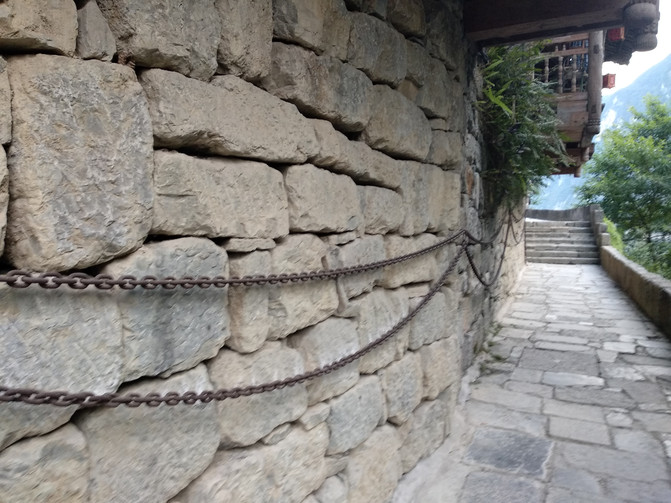
Qiaozhong Bridge (I don't know Qiaozhong Bridge, I'm not from Gongtan.) This type of bridge with stacked bridges is unique to Gongtan.



You need to book a boat ticket for the Wujiang Gallery tour at 9:30am the next day online, which is 30 yuan/person cheaper than going on the same day. I asked many locals about taking a ferry to Pengshui, but none of them answered. I had Wujiang fish at the hotel in the evening, and the taste was really good. It was even better than the Chen carp and stone pot fish we had a few days ago, and the price was not expensive.

On the tenth day, the boat departed punctually at 9:30. There were only four tourists on the boat, but there were six to seven staff members. A 41 kilometer waterway and a 2-hour boat ride, the Wujiang River forms a natural landscape gallery here, hence the name "Wujiang Gallery".


The green mountains on both sides of the strait face each other, and the boat slowly swims between them. Halfway through the 'Hongdu Ancient Town' and crossing the Hongdu Bridge, strolling in the green water reflected by the green mountains, the scenery is truly infinite.


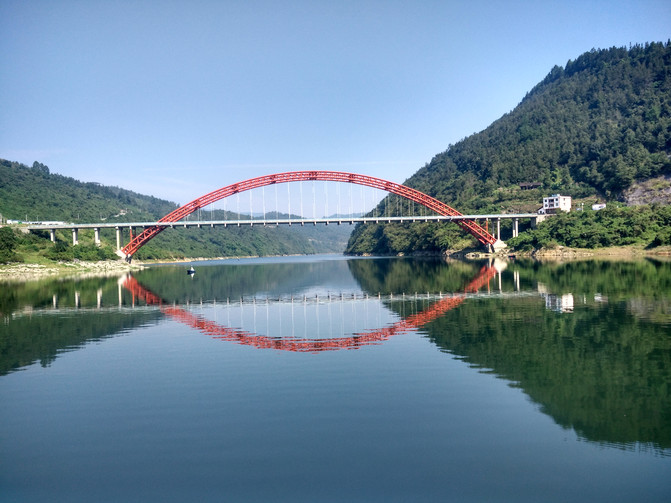


Before noon, the ship docked at Wanzu Pier. There was no one in sight on the dock, so I walked more than a kilometer with my luggage. (The scenic area should have provided a car for transportation on this road.) I stopped a car from Datong to Pengshui by the roadside and took a taxi from Pengshui County to Pengshui North Station. I just caught the 1:00 bus to Chongqing. Three hours later, you will arrive at the 4km hub station, take Line 10 and transfer to Line 6 to exit from Exit 5A of Xiaoshizi Station, and walk 400m to check in the Monument to the people's Liberation Pedestrian Street store in Vienna. The hotel is clean and spacious, but the surrounding environment is very poor. In the evening, I went to "Yang Jilong's Mansion" for dinner, and had to queue up to wait for seats when there were too many customers. Tea flavored duck, yin rice porridge, fried vermicelli pot, good cooking skills, and good taste. Within 100 meters after the meal, you will arrive at Hongya Cave to enjoy the night view of the "Spirited Away Realistic Architecture", which is known as the "Heavenly Street Market" and gives people a sense of fairyland. There are eleven floors in Hongya Cave. The ground floor connects Binjiang Road, and the eighth floor connects Monument to the people's Liberation Wangjiang Platform. The eleventh floor can walk hundreds of meters to the "Qiansimen Bridge", which is the best place to photograph Hongya Cave. The "Agricultural Bank" on the opposite bank can take a full picture of Hongya Cave through the reflection of water.


Day 11: Take Line 2 to "Zengjiayan", exit at Exit C, and take a look at "Chongqing's Most Beautiful Street" Zhongshan Fourth Road,

This is the Anti Japanese War Culture Street, representing the past and present of Chongqing. Starting from the turntable of Shangqing Temple, there are Te Yuan, Gui Yuan, Xian Xiang Gong Wan, Dai Gong Mansion, Zhou Gong Mansion, and ending at the Zhou Enlai Memorial Bronze Statue Square, with a total length of 1000 meters.

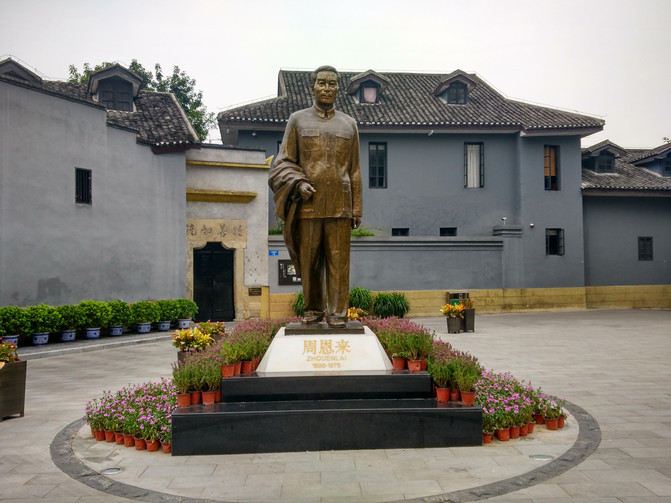
Then go to the 'People's Great Hall' to see the magnificent buildings.



Then take the bus to Liziba and go to the observation deck to see the light rail passing through the building.

The "Liangshan Chicken" in Liziba is not far from the light rail station, but the owner has already washed his hands on the golden plate. The chicken has gone bad and needs to be sold at least once. It is now "out of stock".

By taking the second bus stop, you can get to the "Guanyue Temple". There are not many temples that worship both Guan Yu and Yue Fei at the same time, and the "Eight Trigrams Diagram" in front of the main hall has become mysterious and popular abroad due to its shock.

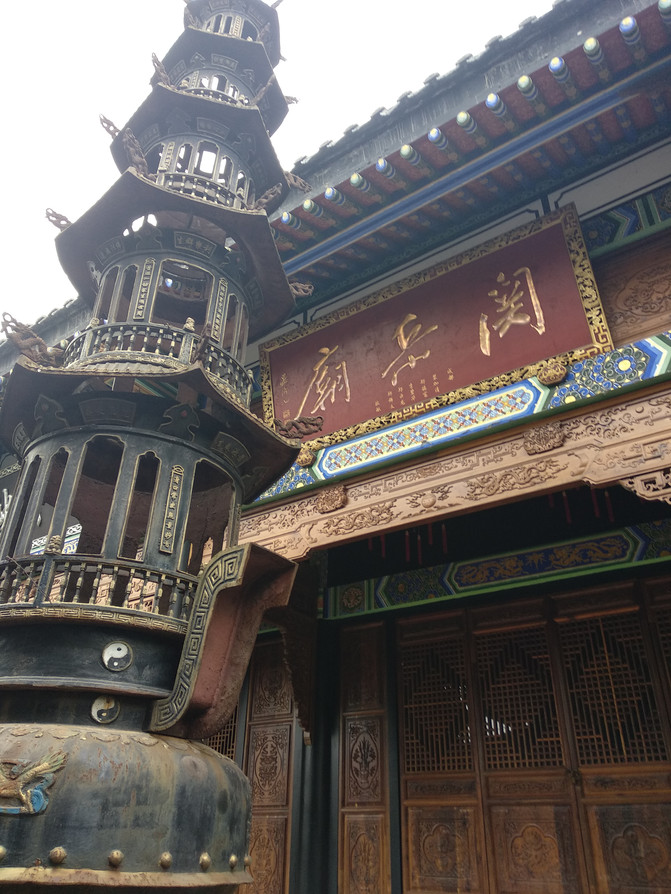





Then take the bus to Monument to the people's Liberation, and first visit the ancient temple "Arhat Temple" surrounded by many tall buildings,

I went to the popular online store "Flower Market Wanzai Noodles" again to taste the small noodles,

Then I visited the Monument to the people's Liberation and took a taxi to Chaotianmen.

Entering the Chaotianmen Square, also known as Titanic Square,

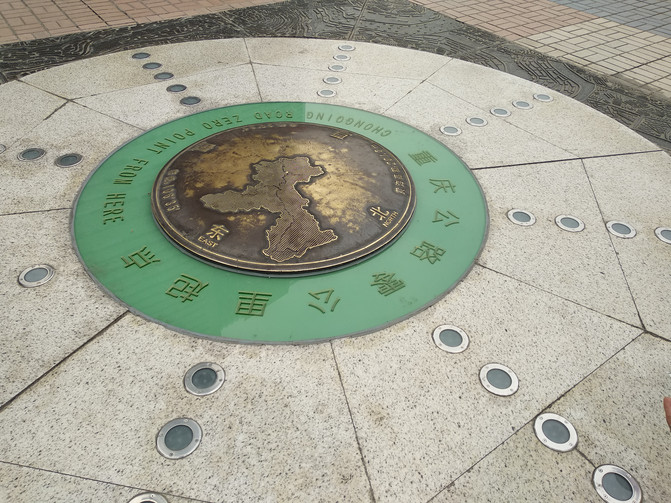
Looking down at the scenery of the confluence of the Yellow River, Yangtze River, and Green River, Jialing River. Chaotianmen Pier:

Then take a bus on Jiefang East Road to the south bank and arrive at "Huangjueya Ancient Street",


The ancient street is undergoing a large-scale renovation, and the original heavy ancient style has been replaced with a brand new appearance. We have seen the birthplace of the writer Sanmao,

I also saw the starting point of Huangge Ancient Road, but I couldn't find the 'Transportation Tea House'.
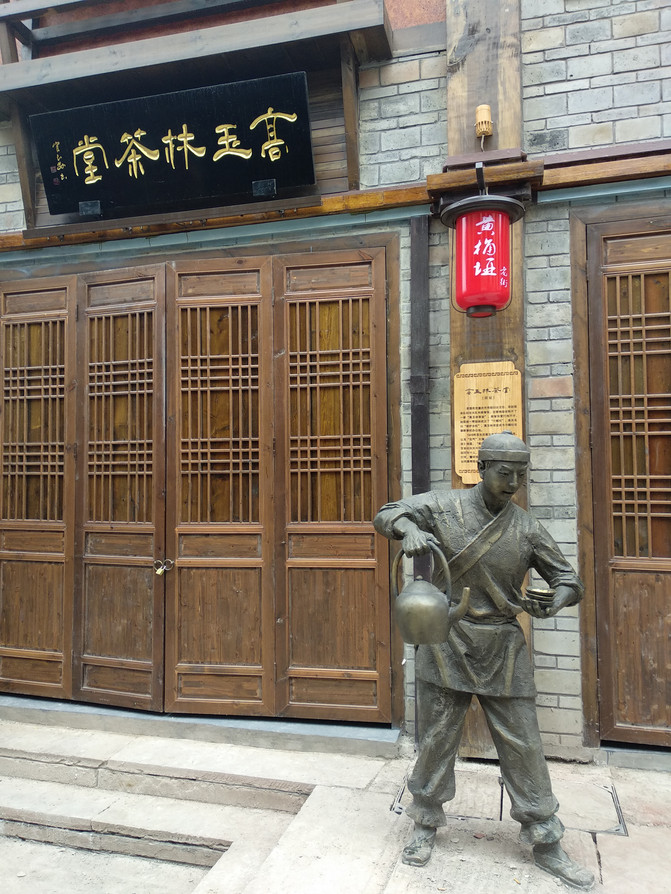



Then I took a taxi for 10 yuan to Laomo Quanshui Chicken Shop and tasted Quanshui chicken.
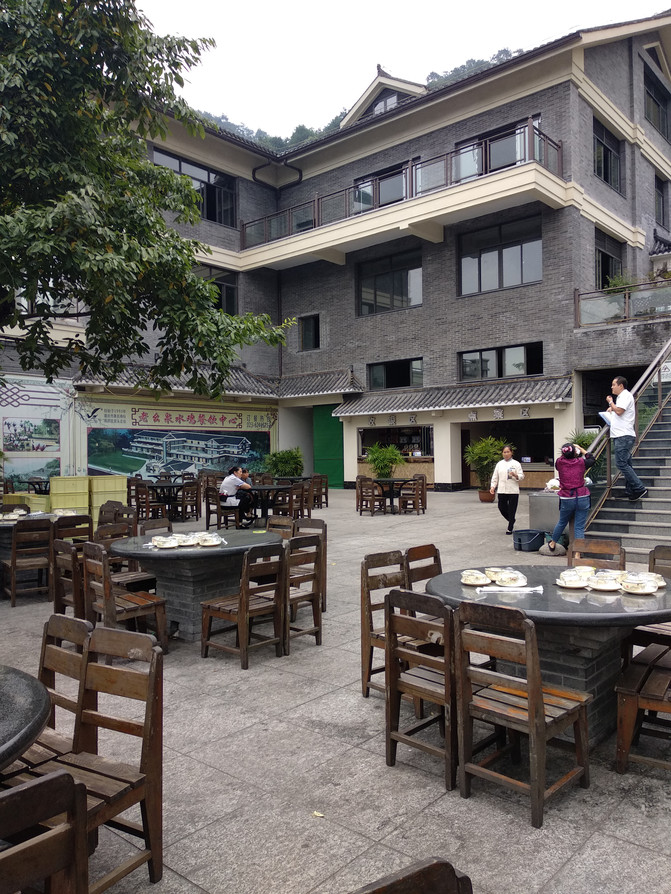

After dinner, take a taxi for 10 yuan to the "Nanshan One Tree Observation Deck". First, take a look at the "gyro shaped" observation deck itself. Then take the elevator to the 6th floor and then the 7th floor platform for observation. Unfortunately, it started raining and the sunset night scene was shrouded in white mist, so we had to give up.



Day 12: Take the subway to the North Railway Station, take the high-speed train to Fengdu, and there is a direct bus from the station to the "Mingshan Ghost City".

Entering the scenic area and taking the cable car up the mountain, I saw Naihe Bridge, Huangquan Road, Impermanence Hall, Yanwang Hall, and saw Yanwang and the little ghost.








The most memorable one is still the one who said 'money can make ghosts grind'.


There is a saying in Fengdu that goes, 'If you walk in Fengdu, you will live to ninety-nine.' The large statue resembling the 'Jade Emperor' on the Heavenly Mountain, with its face sealed, is no wonder it cannot be found.

Dinner will be held on the 22nd floor of the hotel, with a clean environment, good taste, and a view of the river. There are very few diners, and perhaps the surrounding area and accommodation are not clear. There are also restaurants in this building that offer good value for money.

Day 13: Take Line 1 from Xiaoshizi to Martyrs' Cemetery Station. The graffiti on this site is very beautiful,

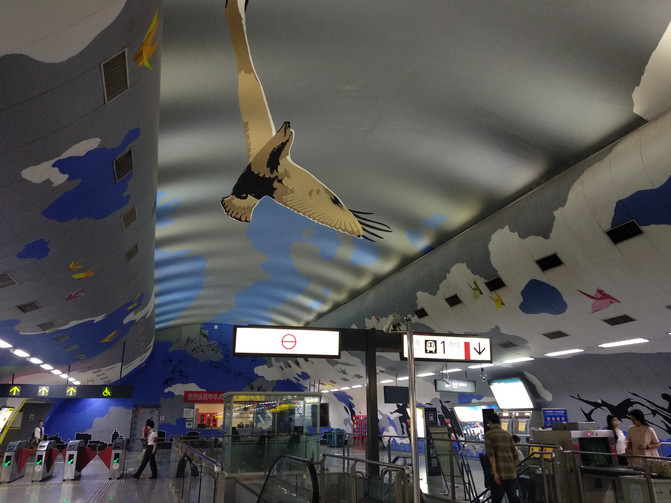

Take bus 210 from Exit 2B to Bai Gongguan (Xiangshan Villa) for a visit,




Then return to the intersection and take a bus to Ciqikou Town.
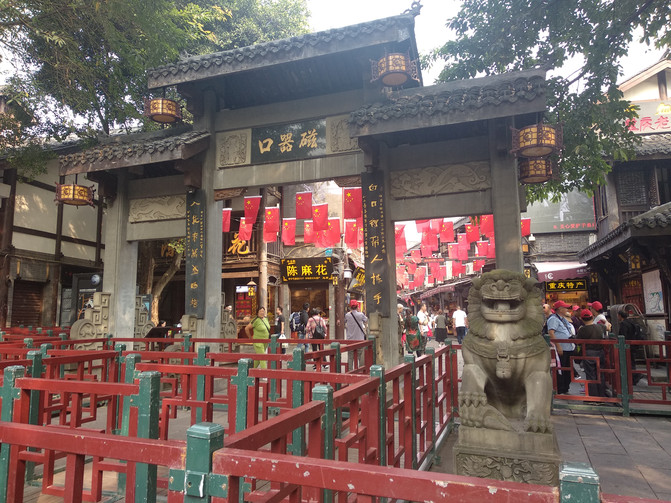
The first ancient town in Bayu, with tea houses, docks, and nine palaces and eighteen temples where Buddhism, Taoism, and Confucianism coexist, it has a unique style of one river, two streams, three mountains, and four streets. There are ancient docks, sculptures of young women's urinals
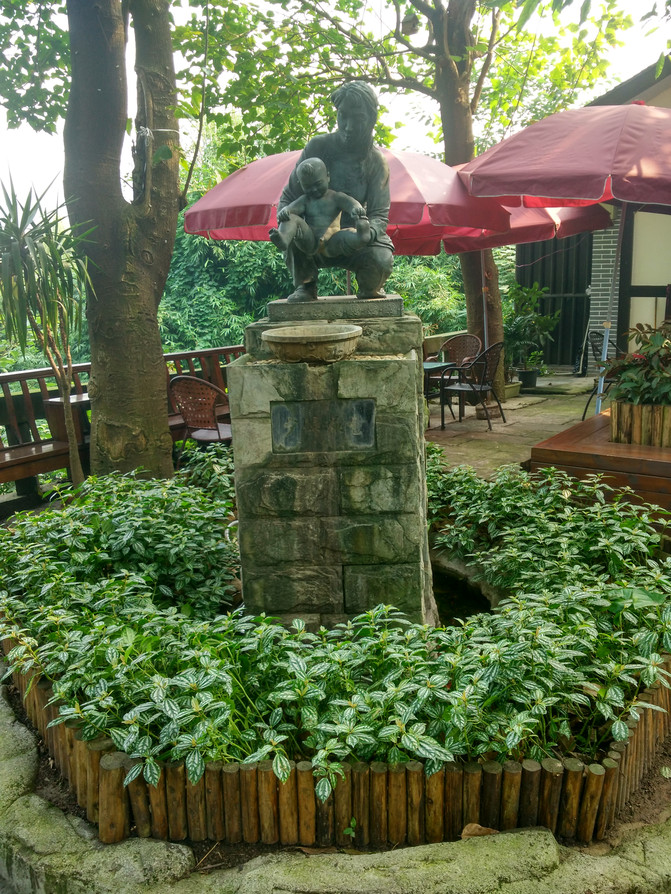
Scenic spots such as Wenchang Palace, Zhongjiayuan, Baoshan Palace, and Baolun Temple, where Emperor Jianwen took refuge and disappeared, offer a variety of delicious food and snacks that are worth a visit.





Returning to the intersection, I saw the second longest sloping escalator in Asia, the Crown Escalator. The one-way escalator costs 2 yuan, ranking first in Asia in Pyongyang. Although the escalator is a bit outdated, its momentum is still there, and it's worth taking a look when you have time.


End the journey to Chongqing and take the evening flight back to Shanghai.
Previous Article:Chongqing Yuzhong natives tell you the correct way to open Hongya Cave
Next Article:My Taste Tasting Tour with Chongqing, 3-Day 2-Night Hot Pot Guide
